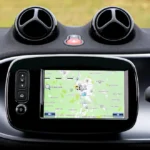Right then, let me tell you about something I’ve been diving headfirst into: interactive storytelling on Facebook using augmented and virtual reality. Forget scrolling endlessly; we’re talking about pulling people into the heart of a brand’s story, letting them virtually experience it. It’s a game changer, believe me.
It all started with trying to solve a common problem: how do you truly connect with your audience amidst the constant noise of social media? Likes and shares are fine, but do they truly resonate? I needed something more, something sticky, something that lingered in the memory. That’s when I looked to Facebook’s AR/VR capabilities.
Virtual Reality Tours: More Than Just a Pretty Picture
One of the most compelling applications I’ve found is in VR virtual tours, particularly for real estate and travel. Imagine you’re a real estate agent. Instead of relying solely on static images and text descriptions, you can offer a potential buyer a fully immersive walkthrough of a property, right from their Facebook feed. We’re talking full 360° views, the ability to ‘walk’ from room to room, and even interact with elements within the space.
To make this happen, you’ll need a 360° camera (there are plenty of affordable options these days) and some stitching software to create the panoramic images or videos. Then, using a VR platform like Matterport (which integrates nicely with Facebook), you can add interactive elements such as information pop-ups that highlight key features, floor plans, or even links to book a viewing.
For tourism boards, the potential is just as immense. Think about letting potential travellers explore ancient ruins, wander through bustling markets, or relax on pristine beaches – all before they even book their flights. This isn’t just about showing pictures; it’s about evoking emotions and sparking a desire to visit.
Making it Interactive: The Key to Engagement
The real magic, however, lies in making these experiences interactive. Don’t just show; engage. For example, in a real estate tour, users could virtually change the colour of the walls, swap out furniture, or even see what the view looks like at different times of the day. For a travel experience, you could include interactive quizzes that reveal hidden gems or offer personalised travel recommendations based on the user’s preferences. I found that A-Frame is a very quick and simple framework to work with when creating these interactive experiences.
Reaching the Right People: The Power of Facebook Ads
Of course, creating a fantastic VR experience is only half the battle. You need to get it in front of the right people. This is where Facebook Ads come into play. The platform’s targeting capabilities are incredibly granular, allowing you to target potential buyers or travellers based on their interests, demographics, location, and even their past browsing behaviour.
For example, if you’re promoting a luxury villa in Tuscany, you could target affluent individuals who have expressed an interest in Italian culture, fine dining, and travel. The ads themselves can feature compelling snippets of the VR tour, enticing users to click through and experience the full immersion.
I found that A/B testing different ad creatives and targeting parameters is crucial to optimise campaign performance. Play around with different visuals, headlines, and call-to-actions to see what resonates best with your target audience.
Ethical Considerations & User Experience:
Remember that users are coming to facebook to engage with friends and family or consume general content. VR and AR interactions need to be approached in an empathetic and accessible way. Avoid flashy or overly ‘salesy’ content to avoid alienating users. Try to make the experience feel natural by considering content accessibility by ensuring that instructions are clear and readily accessible.
I also make a point of not requiring a VR headset for a user to view VR and AR experiences. This is because most users simply don’t have access to a dedicated headset so this would be quite a restrictive approach. Most VR and AR experiences can be accessed via the device’s camera or general browsing experience, this is important to remember.
The Bottom Line: Deeper Connections, Stronger Results
My experience has shown me that interactive storytelling with AR/VR on Facebook is more than just a gimmick. It’s a powerful way to create deeper connections with your audience, foster memorability, and ultimately drive business results. From immersive property tours to captivating travel experiences, the possibilities are truly endless. The key is to focus on high-quality visuals, engaging interactivity, and targeted advertising. By carefully crafting these elements, you can unlock the full potential of Facebook’s AR/VR capabilities and create experiences that leave a lasting impression. It’s about bringing your brand’s story to life in a way that truly resonates with your audience and transforms passive viewers into active participants. This approach, when executed thoughtfully, creates a new level of consumer relationship.











